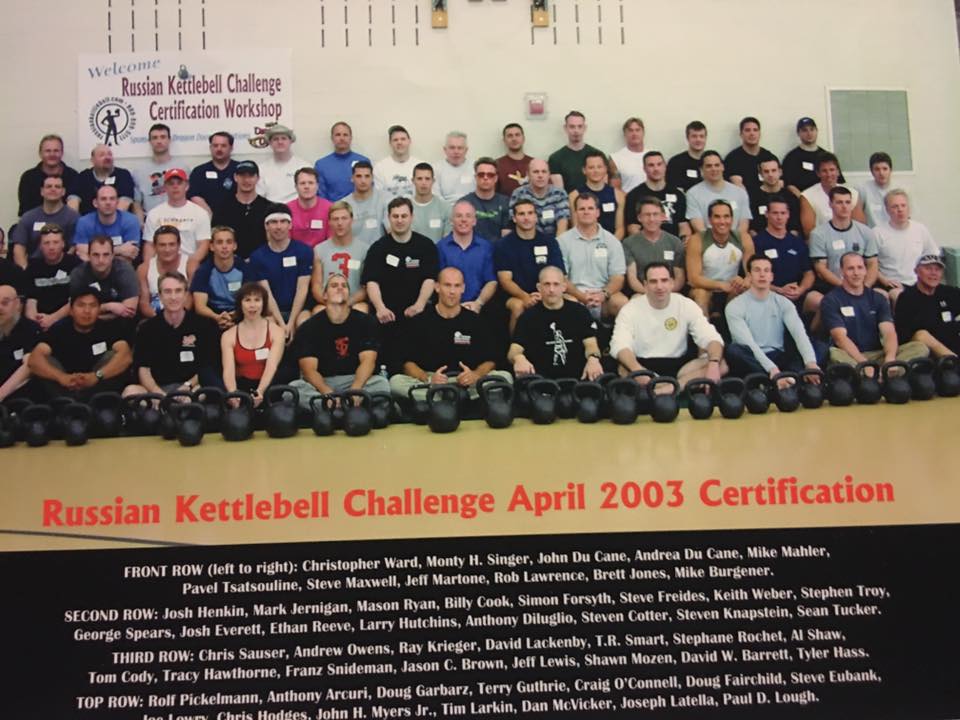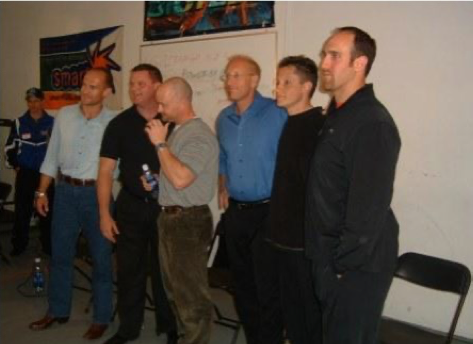Are We Getting Goblet Squats All Wrong?
2020-07-25
The year 2003 was a big one for me. It was the year I went to my first kettlebell certification, even though I badly tried to implement them the year before. This was WELL before kettlebells were common place and in fact, most people would have looked at you cross eyed if you said “hey you want to do some kettlebell training?” Yep, even fitness people! I say it was a big year because kettlebells opened my mind up so much to creating solutions to my clients and we will talk about one of the best examples in Goblet squats where I see people go wrong ALL the time.

Before I get into the how’s I think the why’s are super important and what better way to explain the why’s with a little history lesson. I’ll be honest, the goblet position wasn’t a big thing in the early year of kettlebells, sure it was talked about in passing, but double and single rack squats were FAR more popular and I loved them so much that I didn’t even give Goblet squats much attention.
The first year I got to teach at a kettlebell certification was around 2005 after speaking at an event that had the likes of Pavel Tsatsouline, Charles Staley, and Dan John all speaking as well (pretty intimidating for one of my first speaking gigs). However, it was a great success and sometimes I like to just listen, Pavel and Dan seemed to hit it off very well. Next thing I knew Dan was attending a kettlebell certification as well and sharing his idea of Goblet squats.

I mean, I had hair back there, how old do pics like this one seem!
You see Dan was teaching at a high school as well as being an assistant coach for the high school football team. That meant he was also helping them with their training as well. With Dan’s extensive experience in Olympic lifting, he wanted many of the football players to be able to perform the lifts, however, for the average high school athlete they can be very challenging to teach. Especially the rack position for the clean and front squat.
Dan found that so many lifters lacked the body coordination, strength, mobility, and overall fitness to do drills like barbell front squats well. The kettlebell seemed to be a great vehicle to teach the concepts of the front squat while also building their overall fitness so they could make a transition to the barbell. So, what is the point of my story?
-Goblet squats were initially used as a teaching tool, not a maximal lift in of itself.
-The kettlebell really matters.
-Josh has been doing this stuff for a LONG time!
In all seriousness let me break down some of these concepts and show where people go wrong in their goblet squats all the time.

Goblet Squats As A Teacher
Pretty soon after Dan introduced goblet squats, it seemed like everyone was using them with all their clients. The issue was they didn’t understand some key concepts about goblet squats that either allow them to be a huge failure or amazing success.
-Load Matters, Like A LOT!: It is in the personal training handbook, when you give a new client a weight you want to give them a very light weight. That is because most of us think of load as challenging the movement we are giving the client, therefore, that makes a lot of sense. However, goblet squats were so revolutionary because they were one of the first instances where we saw the load as actually HELPING the movement.
I see so many ads and even social media posts of clients using goblet squats with really light weights. That just doesn’t work because the load does some really important things.
- Feedback: The load helps direct the lifter in the proper position of the movement
- Tension: Stability isn’t really achieved by how much you bounce or shake on an exercise. Rather, by how you teach the muscles to work synergistically. One powerful and simple way is using load and tension techniques to teach the body how to use the right muscles to develop that stability that offers us better strength and mobility.
Understanding what the role of the kettlebell and the weight brings to goblet squats is SO important in building that success.
Solving Common Issues of Goblet Squats
Okay, so if you understand these concepts of goblet squats you are all set and ready to roll right? Well, if you do really take home these ideas, you will have so much more success with goblet squats and more, but there are a few other issues to address. These are things that I hear from coaches all the time and see happen in the gym far too often.
For example, what if the weight you give the individual they can’t hold (due to fitness limitations) or it doesn’t make them move all that much better, what do you do? Back in the day I felt kinda stuck at that point and probably like a lot of coaches just felt like that was the best it was going to be for that time. However, if you know me, that isn’t good enough. I always want better and that is why I kept looking for ways to build better movement for my clients, I hate “good enough” in many cases.
The Squat Many Should Begin Their Fitness Journey With…
It is so funny, in the fitness industry you are so quickly labeled the “weightlifting guy”, the “CrossFit guy”, the “breathing guy”, the “powerlifting guy” and so on (funny enough I was called the “kettlebell guy in the mid 2000’s by a famous strength coach, hard to be both the kettlebell and “sandbag guy”). The reality is that in many cases these titles are accurate because these are the only “schools” that coaches really look at. Since I wasn’t interested in competing in any sport or anything but getting clients better results I have been through MANY of these schools and that gives me a unique perspective on methods, techniques, progressions, and systems.
That is how I came up with the DVRT Press Out Squat. I realized that many clients couldn’t hold enough weight or get enough feedback from the weight to really benefit from what goblet squats could offer.
https://www.instagram.com/tv/B7Hq_L3h-4R/
Megan Berner, coach of Fitness Lying Down, breaks down why the Press Out Squat is so good to start with and helps us bridge to goblet squats.
Ok, So That’s It Right?
Well, having a system we have to ask the right question. We now have a better starting point where we can help more people and optimize goblet squats better. Then we know that goblet squats have specific techniques and require the use of a kettlebell to really “get it”. However, where do you go as the limiting factor in your goblet squats becomes how much you can hold?
I can’t tell you how many times I see lifters trying to lift ridiculously big kettlebells to do maximal effort goblet squats (remember, that wasn’t their original purpose). What do you do though if you want to keep building a great squat, taking press off of the low back, building great core stability and hip mobility? The answer is Front Loaded Squats as DVRT Master, Cory Cripe explains. These LOOK very similar but the dimension of the Ultimate Sandbag and the loading position give us a VERY different type of opportunity to build the squat.
That is why we usually use the progression of Press Out Squat->Goblet Squat->Front Loaded Squats
Don’t miss saving 25% on ANY of our Ultimate Sandbags and when you invest in these great functional training tools, you will also get 2 Ultimate Sandbag and kettlebell HIIT workout programs for you to get both the tools and the know how to succeed! Just use code “july25” HERE
View this post on Instagram
© 2025 Ultimate Sandbag Training. Site by Jennifer Web Design.







